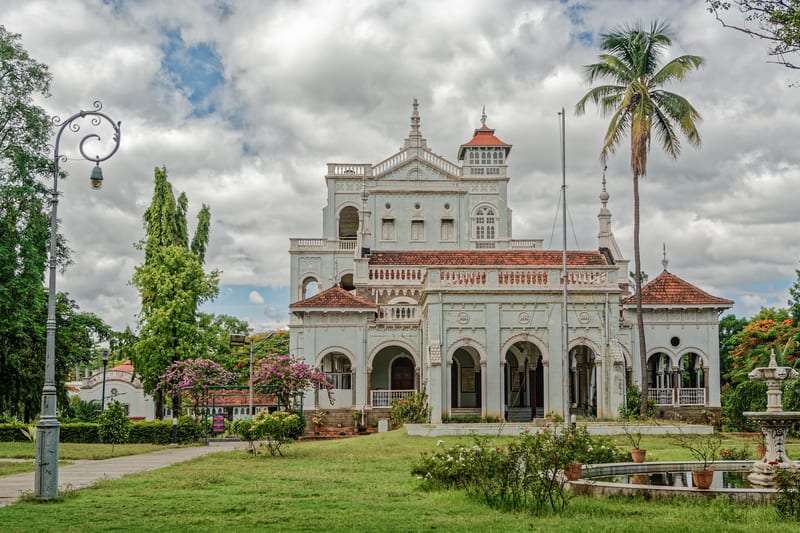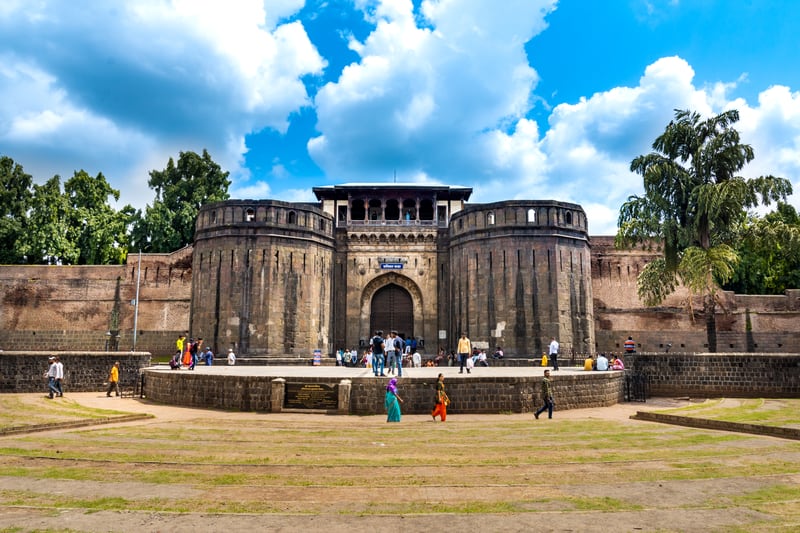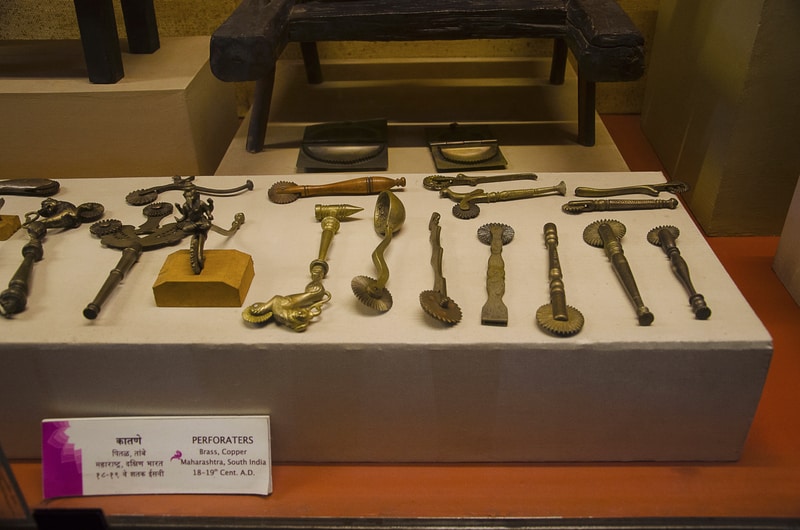
Where is Pune in India – Pune is one of the oldest cities in India, located in the state of Maharashtra. Often referred to as the Oxford of the East, it’s home to a rich cultural heritage, stunning architecture, and some of India’s most important historical sites.
Let us Explore all the aspects of Pune – its history and geography, population and climate, places to visit, and things to do – plus facts and trivia about this fascinating city. So join us as we unravel the many layers that make up Pune and discover why it’s such an essential part of Indian history!
Introduction to Pune
Pune is one of the largest cities in India, located in the state of Maharashtra. It is also the second largest city in the state after Mumbai. Pune is known for its educational institutions and has a large student population. The locals speak the Marathi Language. The city also has vibrant nightlife and is a popular tourist destination.
Population of Pune
Pune is the second largest city in the state of Maharashtra, India. It is the ninth most populous city in the country. The city is located on the right bank of the Mutha River, around 170 km from Mumbai. It is also known as the “Oxford of the East” due to the city’s many educational institutions.
Pune city is estimated to have a population of 4,307,000 in 2023, with literacy rates, sex ratios, and densities as follows. The current estimates of Pune city are based on past growth rates.
Literacy rate in Pune
A total of 2,496,324 people are literate in Pune city, out of which 1,317,345 are males, and 1,178,979 are females. The average literacy rate of Pune city is 89.56 percent, with male literacy at 92.31 and female literacy at 86.67 percent.
Sex Ratio in Pune
Pune has a sex ratio of 948 males per 1000 males and 908 females per 1000 males.
The population of children in Pune
Pune City has a total of 337,062 children between the ages of 0 and 6, according to the 2011 Census India report. There are 176,624 boys and 160,438 girls. Children represent 10.79 % of the city’s total population.
Geography of Pune
Pune is a city located in the state of Maharashtra in, India. It is about 100 kilometers southeast of Mumbai. Pune has a population of over 3 million people. The city is situated on the Deccan Plateau at 559 meters above sea level. Pune experiences a tropical wet and dry climate.
The average temperature in Pune is 26 degrees Celsius. The city experiences three main seasons- summer, monsoon, and winter. Summer lasts from March to June and is characterized by hot and humid weather.
The monsoon season lasts from July to October, bringing heavy rain to the region. The winter season lasts from November to February and is relatively cooler, with temperatures ranging from 20-25 degrees Celsius.
Climate of Pune
Pune has a tropical wet and dry climate. The city experiences three main seasons: summer, monsoon, and winter. The summer season in Pune lasts from March to June; temperatures can range from 32 degrees Celsius to 41 degrees Celsius.
The monsoon season in Pune starts in July and ends in October/November. During these months, the city experiences heavy rainfall and high humidity levels. The winter season in Pune starts in November and lasts till February.
Temperatures during these months are relatively cooler, with maximums ranging from 15 degrees Celsius to 25 degrees Celsius.
History of Pune
Pune, formerly called Poona, is a city in western India about 170 km from Mumbai. It is India’s ninth most populous city. Pune is the second largest city in the state of Maharashtra after Mumbai.
The history of Pune dates back to the 8th century, when it was a part of the Rashtrakuta Dynasty. In the 10th century, it was conquered by the Chalukyas and later became a part of the Yadava Dynasty.
These dynasties ruled Pune until 1327, when Sultan Bahadur Shah of Gujarat annexed it. The city declined until 1630 when Shivaji Maharaj took control of it and made it his base. Under Shivaji’s rule, Pune flourished and became an important strategic location.
After Shivaji’s death, the Marathas lost control of Pune to the Mughals but regained it in 1720 under Peshwa Bajirao I. The city continued to be an important center under the Maratha Empire until 1818, when British troops occupied it during the Third Anglo-Maratha War.
British rule lasted until 1947, when India gained independence from them. Post-independence, Pune developed rapidly into a central industrial town with many educational institutions being set up here.
Tourist Attractions in Pune
Pune is one of the most popular tourist destinations in India. It is known for its historical monuments, temples, and museums. The city also has several parks and gardens that are worth visiting.
Some of the most popular tourist attractions in Pune include the Aga Khan Palace, Shaniwar Wada, and Raja Dinkar Kelkar Museum. The city also has several religious sites, such as the Mahabaleshwar Temple and the Dagdusheth Halwai Ganapati Temple.
Here are some Tourist Attractions in Pune
1. Aga Khan Palace – The Aga Khan Palace is a historic Pune monument built in 1892 by Sultan Muhammed Shah Aga Khan III. It is located near the Mula-Mutha River and is a popular tourist attraction.

2. Shaniwar Wada – The Shaniwar Wada is an old fort in Pune and was constructed by the Peshwa rulers of the Maratha Empire in 1732. It is one of the most popular tourist attractions in Pune, with its imposing gates and huge walls.

3. Raja Dinkar Kelkar Museum – The Raja Dinkar Kelkar Museum is a museum dedicated to the arts and crafts of Maharashtra, India. It displays various artifacts from different regions of Maharashtra as well as ancient inscriptions, sculptures, paintings, musical instruments, traditional utensils, coins, and weapons from all over India.

4. Mahabaleshwar Temple – This temple is located at the foot of an ancient hillock called Parvatgad in the Pune district. It dates back to the 11th century AD when King Bhojraj built it during the Yadava dynasty rule.
Interesting Facts About Pune
Pune, also known as the “Oxford of the East,” is one of India’s largest cities and the capital of Maharashtra. The city is situated on the Deccan Plateau in the Western Ghats range of mountains. Pune is considered to be one of the ancient cities of India.
The city has a rich history and was once the capital of the Maratha Empire. Today, Pune is a central cultural and educational hub in India. Here are some interesting facts about Pune:
- Pune is home to over 7 million people.
- The average temperature in Pune is 27 degrees Celsius.
- Pune experiences three seasons: summer, monsoon, and winter.
- Pune was ranked as India’s second most livable city by Mercer’s Quality of Living Survey 2018.
- Pune has over 100 educational institutions, including Savitribai Phule Pune University and Symbiosis International University.
- The city is also home to many historical sites, such as Shaniwar Wada Fort and Aga Khan Palace.
Historic Places in Pune
Pune, India’s second-largest city in Maharashtra, is known for its many historical places. The city was once the capital of the Maratha Empire and served as a significant political and cultural center for many years. Today, Pune is a bustling metropolis with a population of over 3 million people. While much of the city has been modernized, many historical places in Pune still exist. Here are just a few of the most notable ones:
Shaniwar Wada: This imposing fort was built in 1730 and served as the seat of the Maratha Empire for many years. It is now a popular tourist destination and hosts various cultural events throughout the year.
Aga Khan Palace: This beautiful palace was built in 1892 by Sultan Muhammed Shah Aga Khan III. It served as a prison during India’s freedom struggle and houses a museum dedicated to that period of history today.
Pataleshwar Cave Temple: This 8th-century cave temple is dedicated to the Hindu god Shiva and is one of the oldest temples in Pune. It is made of solid rock and features intricate carvings on its walls and pillars.
Raja Dinkar Kelkar Museum: This museum is housed in an old building that was once the residence of Raja Dinkar Kelkar, a noted scholar, and collector of art from the Maratha period. The museum contains over 20
Festivals in Pune
Pune is known for its lively and vibrant culture, and this is reflected in the many festivals that are celebrated in the city. Some of the most popular festivals in Pune include Ganesh Chaturthi, Dusshera, Diwali, and Holi.
Ganesh Chaturthi is one of India’s most widely celebrated festivals, and Pune is no exception. The festival commemorates the birth of Lord Ganesh and is marked by 10 days of festivities. On the final day, massive processions are held across the city, culminating in the immersion of lord Ganesh’s idols in rivers or seas.
Dussehra is another major Hindu festival celebrated with great pomp and shown in Pune. It marks the victory of good over evil and is observed through 10 days of fasting and feasting. The festival’s highlight is the grand procession on the 10th day, which features lavishly decorated floats carrying effigies of demon king Ravana.
Diwali, the festival of lights, is also celebrated with much fanfare in Pune. Homes are decorated with diyas (clay lamps) and rangolis (colorful designs), and sweets and snacks are prepared in abundance. Fireworks are an integral part of Diwali celebrations in Pune, adding to the festive atmosphere.
Holi, the festival of colors, is another famous festival celebrated with great gusto, with people from all walks of life coming together to celebrate with different colors.
How to Reach Pune
Pune is a city located in the state of Maharashtra in, India. It is about 170 kilometers (100 miles) from Mumbai. Pune is a popular tourist destination because of its proximity to Mumbai and its many historical and cultural attractions. There are several ways to reach Pune from Mumbai, including by plane, train, or bus.
By Plane:
The quickest way to reach Pune from Mumbai is by plane. Several flights depart daily from Mumbai’s Chhatrapati Shivaji International Airport to Pune’s Lohegaon Airport. The flight takes about an hour and a half.
By Train:
Another option for getting to Pune from Mumbai is by train. Several trains operate between the two cities every day. The journey by train takes about four hours. Pune Junction railway station is the closest.
By Bus:
Various buses ply between Mumbai and Pune daily. This option is slightly cheaper than the others, but it takes longer, with the journey time being around five hours or more, depending on traffic conditions.
What is Pune famous for
Pune is a city located in southeastern Maharashtra state in India. It is at the confluence of the Mula and Mutha rivers. Pune is known for its educational institutions, with over 100 colleges and universities, including the University of Pune and Symbiosis International University. The city is also home to many historical and cultural landmarks, such as the Aga Khan Palace, Shaniwar Wada, and Raja Dinkar Kelkar Museum.
Pune is a city located in southeastern Maharashtra state in India.
• It is at the confluence of the Mula and Mutha rivers.
• Pune is known for its educational institutions, with over 100 colleges and universities, including the University of Pune and Symbiosis International University.
• The city is also home to many historical and cultural landmarks, such as the Aga Khan Palace, Shaniwar Wada, and Raja Dinkar Kelkar Museum.
List of famous street food in Pune
Pune is known for its street food, and a few dishes are famous in the city. Some of the most popular street foods in Pune include:
1. Vada Pav: This is a popular snack made with a potato fritter and served with chutney and fried chili peppers. It is often eaten as a quick snack or meal on the go.
2. Samosa is a fried pastry filled with potatoes, peas, and spices. It is usually served with chutney or ketchup.
3. Pav Bhaji: This dish is made with mashed vegetables, bread, and butter. It is often served as a quick snack or meal on the go.
4. Chaat: This dish is made with various snacks such as fried dough balls, chickpeas, potatoes, and yogurt. It is often served as a quick snack or meal on the go.
5. Bhel puri: This dish is made with puffed rice, vegetables, and spices. It is often served as a quick snack or meal on the go
Culture of Pune
Pune is a city located in the state of Maharashtra in, India. It is known as the “cultural capital of Maharashtra” and is home to many historical and religious sites. It is also a major educational center, with over 100 colleges and universities.
Pune has a long history, dating back to the 8th century CE when it was part of the Rashtrakuta Empire. It later became part of the Yadava dynasty and then the Maratha Empire. The British conquered the city in 1817 and became a part of the Bombay Presidency. After India’s independence in 1947, Pune became part of the new state of Maharashtra.
The city is known for its relaxed atmosphere and cosmopolitan culture. It is also home to many students from all over India and abroad, contributing to its vibrant cultural scene. There are many popular tourist attractions in Pune, such as the Aga Khan Palace, Shaniwar Wada, and Raja Dinkar Kelkar Museum.
Conclusion – Where is Pune in India
In conclusion, Pune is located in the western part of India in the Maharashtra state. It’s known for its vibrant culture and rich history, making it an ideal destination to visit on your next trip. With stunning architecture, delicious food, exciting nightlife, and plenty of outdoor activities to keep you busy, there’s something for everyone in this bustling city. Whether planning an extended stay or just passing through on holiday, Pune is one place that should not be missed!
I hope I have answered your question on ‘Where is Pune in India.”
Leave a Reply